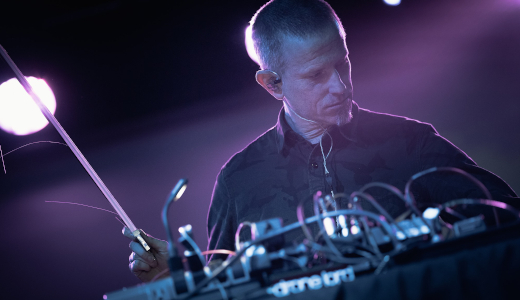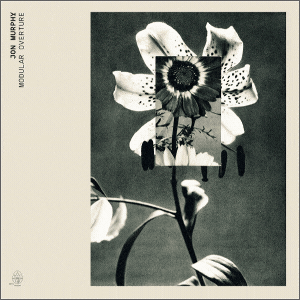Scoring is designed, music is art

Nathan :: It’s super cathartic. That’s a big reason why I make music at all. Therefore, if people think that my music is too dark I really absolutely recognize that and frankly agree sometimes. It’s not going to be for everybody, but it has to exist for me to express what’s inside of me.
CRT :: Yeah.
Nathan :: Using the term exorcising, it absolutely exorcises a lot of the worry and frustration and anger I feel.
CRT :: Yeah.
Nathan :: All I can say is that it’s hopefully more productive to express those dark feelings in this way than the alternative.
CRT :: Absolutely. It reminds me of a study some univeristy did that found people who listened to heavy metal and darker music tend to be a little better adjusted because they’re listening to stuff that’s very heavy and cathartic. You may or may not be able to whistle along, but at the same time, it requires you to go through a path to kind of listen to, if that makes sense.
Nathan :: Yeah. I agree.
CRT :: “In, out, through, and beyond” as it were.
Nathan :: When I meet fellow musicians who make music even more intense, darker, and heavier than me, nine times out of ten, they were the sweetest, most gentle people I’ve ever met. We tend to become instant friends.
CRT :: Oh, I know. That’s so funny. Now I think you would probably say the same thing I recently said to my wife, “First and foremost, I have to make my music solely for me. If other people like it, it’s great. I can kind of take it or leave. Yet sometimes, most of the time, if they don’t, because ultimately, this is my soundtrack for my life to a degree.”
Nathan :: Absolutely! I think a lot of it like anyone who makes music in order to be liked is going to sound crap. At the same time, I think that those who make music want it to be enjoyed, and they just want it to be liked. That is the outcome. That is not the rationale for why the music is made.
CRT :: Yeah, exactly. It’s innocent because personally, I can’t really make music to order. And I was talking to a friend of mine who works in in film and TV a little bit about scoring. He’s expected to put together like a reel and he’s like “okay, so here’s ‘Safety,’ or here’s ‘Preparing to blow up a bank’ or something like that. I find it hard to do things that are made to order, because I feel like a lot of my music comes from improvisation and spontaneous creation.
Nathan :: Well, I’m doing more and more scoring myself. I’m finding that I’m so surprised that I’ve never heard anyone else draw a conclusion, but it’s really simple: Scoring is designed, music is art.
CRT :: That is brilliant!
Nathan :: Your design is using your skill. When you’re zooming your personal goals in the service of someone else’s vision. That is an art, that is a craft, that is a science, and it’s fucking amazing.
CRT :: Yeah,
Nathan :: One is extrinsically influenced, and the other is intrinsically influence.
CRT :: I like that.
Nathan :: That’s the difference.
CRT :: Yeah, that makes total sense. It reminds me of reading something in TapeOp where Charlie Clouser was talking about…
Nathan :: I read that interview recently. Yeah.
CRT :: Right, he’s talking about scoring, saying “You’ve got to be willing to hear that the director hates what you did. You have to turn around on a dime and produce something in two hours that serves the movie not your vision.” That’s brilliant.
But back to this kid Moody’s album! What was the impetus? Where and when did this start in your mind, and then out to your hands into the machines and the people in such?
Nathan :: This album was an outgrowth of the fact that I was starting to do some small scoring projects in games and podcasting. It really rekindled my interest in theme and motif. Not just because they are enjoyable in the repetition, but that there are textures and melodies that refer to certain things that you re-invoke in slightly mutated ways to bring people back to a notion, a character, a thought, stuff like that.
CRT :: Okay, that’s fascinating.
Nathan :: At the same time, I did want to do a project in that way that would also bring along manipulated sound, handmade instruments, field recordings, and all this other stuff. What I also realized is that what I wanted to achieve, I actually couldn’t pull it off myself alone.
CRT :: Now, how does that make you feel when you’re like that? Because I am a megalomaniac –
Nathan :: I know where you’re going with that.
CRT :: I mean I’ve played in bands in High School and stuff. But maybe I’ve just worked by myself for so long that I don’t quite know how to work with others. Do you feel like, “Oh, this is cool, I can reach out to these other musicians,” or are you like, “Ooh, they better not fuck up my vision!”
Nathan :: Oh, it was the opposite. I reached out to other artists, not because there was definitely a risk that they would screw up my vision. It was that I knew I couldn’t execute against my own vision without help.
CRT :: Like they were skilled players and an instrument that you weren’t skilled in or something?
Nathan :: To a certain degree, yeah. I’ve been a creative director in previous careers. One of the things that I love the most about being in a role is to push people beyond what they themselves think they’re capable of. On this album, that worked in two ways. Number one, I wanted to do that to myself for a change and try to hit way above my weight class musically. I wanted to reach out to other people who might be instead known for themselves being composers or being electronic musicians. Maybe I wanted to take that electronic musician who used a little bit of voice in her work and said, “let’s just focus on your voice. In fact, let’s focus on your voice and give you an assignment. Sing with as much breath as you can.”
CRT :: This is, of course, Martha Bahr.
Nathan :: Yeah, Martha Bahr, Panic Girl. I had another friend who was this beautiful melodic singer. I asked her to sing as quietly as she could while still barely holding pitch.
CRT :: Wow!
Nathan :: I asked another person—Hollings—to not fully sing, but instead hum. “How quiet can we get a hum while still barely kind of holding pitch?” Another person was Carson Sestili. I asked Carson to disintegrate every note as it decayed. It was up to them how they would do that.
CRT :: Wow!
Nathan :: Sometimes the noise disintegrate into groan or hisses. Out of all of these vocal performances, I would stitch together these choral performances that sounded like there were many more people than just one or two at the time.
CRT :: Wow!
Nathan :: That really added human frailty to my work that honestly, I didn’t know hasn’t existed until now.
CRT :: That’s amazing! Asking them to do that is brilliant. I love studio lore as much as you probably do. I love the stories of what producers or artists themselves did to get a performance out of somebody. For some reason that reminds me of the story of Mike Watts (Bass player for The Minutemen, fireHose, Sonic Youth). He said to someone after about the 10th take, “I want you to play this solo like someone is coming at you with a sock full of fucking nickels!” He freaked them out so bad, they nailed the take.
Nathan :: You know who my patron saint for that stuff is? It’s Sylvia Massey.
CRT :: Oh my god yes!
Nathan :: She has this great story about recording with Tool, and Maynard (Maynard James Keenan, Tool singer) wasn’t getting some vocal right. She’s like, “You need to run around the block five times.” He’s like, “Fuck you, you’re just the producer.” She’s like, “No, fuck you, I’m also the recording engineer.”
CRT :: Hah!
Nathan :: “I’m not recording you until you do three rounds around the block.” He was angry, and she forced him to do it and he comes back exhausted and angry. That was the take.
CRT :: Oh, I love that.
Nathan :: I had to ask Michael Cobra, the guitarist to really just rip open this big crescendo in a track called “Strange Window.” He did that. His approach was not only give me two different guitars on a bunch of different amps so I can properly track this massive guitar solo. He also gave me 19 tracks of just feedback…
CRT :: Wow!
Nathan :: …with those same variations. Feedback on an SG. Feedback on a Telecaster, each of those through a bunch of different amps. The tone and the character in this period are all totally different. That required me to just restructure one of my songs to fit it in as a coder.
CRT :: Wow!
Nathan :: It’s beautiful and brilliant. That was a push and pull that I was looking for. Give me material that forces me to rethink what I’m even doing. That’s makes me better. That makes each musician better. That is, I think, the central joy of collaboration.
CRT :: It’s true, it reminds me how you don’t grow until you’re out past your comfort zone.
Nathan :: Oh, hell yeah.
CRT :: Until you hate everyone around you especially the person asking you to go out there. Once you do, you realize that you’re in this place, and you’re in an arena, or whatever mindset of being able to do something totally different with access to a totally different space of talent, even.
<< previous page | next page >>

















![Allmanna Town :: 1911 EP (Self Released) — [concise]](https://igloomag.com/wp/wp-content/uploads/2025/03/allmannatown-1911_feat2-75x75.jpg)



